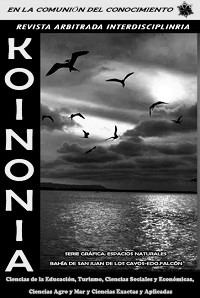Principle of mediation and its application in telematic hearings
DOI:
https://doi.org/10.35381/r.k.v8i1.2487Keywords:
Right to justice, right to justice, telematics, (UNESCO Thesaurus).Abstract
The objective of the research is based on analyzing how the application of new technologies affects the law and how it can be used without affecting the principles, giving guidelines for the best adaptation and use of this, since the use of the tools should not be stigmatized either. technological, but rather to look for its best application. The methodology used began as descriptive research. The study concludes on the need for a reform to the normative body, to establish better parameters in the use of this tool, especially in trial hearings, where particular issues can be presented in the testimonies of witnesses and experts, determining the importance of new technologies and their implementation in the administration of justice.
Downloads
References
Amoni, G. (2014). Límites Constitucionales a la Audiencia Telemática en el Proceso Venezolano [Constitutional Limits to the Telematic Hearing in the Venezuelan Process]. Revista de Derecho Comunicaciones y Nuevas Tecnologías, 1-34, DOI: http://dx.doi.org/10.15425/redecom.12.2014.10.
Cabanellas, G. (1979). Diccionario Juridico Elemental [Elementary Legal Dictionary]. Buenos Aires: Heliasta S.R.L.
Cabezas, E., Andrade, D., & Torres, J. (2018). Introducción a la Metodología de la investigación Científica [Introduction to the Methodology of Scientific Research]. Sangloqui: Comisión Editorial de la Universidad de las Fuerzas Armadas ESPE.
Cano, M. (2022). Principio de inmediación en juicios civiles virtuales durante la emergencia sanitaria en Ecuador [Principle of immediacy in virtual civil trials during the health emergency in Ecuador]. Revista Interdisciplinaria de Humanidades , Educación, Ciencia y Tecnología, 189-199.
Código Orgánico de la Función Judicial. Registro Oficial Suplemento 544 de 09-mar.-2009 Ultima modificación: 22-may.-2015. Recuperado de https://www.funcionjudicial.gob.ec/www/pdf/normativa/codigo_organico_fj.pdf
Código Orgánico General de Procesos. Recuperado de https://biblioteca.defensoria.gob.ec/handle/37000/2734
Código Orgánico Integral Penal. Recuperado de https://n9.cl/w71g
Constitución de la república del Ecuador. 2008. Registro Oficial 449 de 20-oct-2008 Ultima modificación: 13-jul-2011. Recuperado de Registro Oficial 449 de 20-oct-2008 Ultima modificación: 13-jul-2011
Corte Constitucional. (2016). Sentencia N° 005-16-SEP-CC. https://n9.cl/unikf
Corte Nacional de Justicia, 17721-2016-0206 (Sala Especializada de lo Penal, Penal Militar, Penal Policial, Tránsito, Corrupción y Crimen Organizado de la Corte Nacional de Justicia 02 de febrero de 2017).
Cubas, V. (2005). Principios del Proceso Penal en el Nuevo Código Penal [Principles of the Criminal Procedure in the New Criminal Code]. Revista Derecho & Sociedad, (25), 157-162, https://n9.cl/829lz
Decap, M. (2014). El Juicio oral y los principios de inmediación y contradicción [The oral trial and the principles of immediacy and contradiction]. Revista del Instituto de la Judicatura Federal, 57-76,
Deluca, S., & Carril, E. (2017). Cooperación Interenacional en materia penal en el MERCO SUR: el cibercrimen [International cooperation in criminal matters in MERCOSUR: cybercrime]. Rev. secr. Trib. perm. revis. Año 5, Nº 10, 13-28.
Hernández, R. (2014). Metodologia de la Investigación [Investigation methodology]. Sexta Edición. México D.F.: McGRAW-HILL / INTERAMERICANA EDITORES, S.A. DE C.V.
López, P., & Gende, C. (2022). Vulneración al derecho del debido proceso: Perspectiva desde los Derechos Humanos en Ecuador [Violation of the right to due process: Perspective from Human Rights in Ecuador]. 593 Digital Publiser, 724-734, doi.org/10.33386/593dp.2022.1-1.1027.
Macías, G., Rivera, L., & Moreno, P. (2021). El principio de inmediación en el desarrollo de audiencias virtuales en materia penal [The principle of immediacy in the development of virtual hearings in criminal matters]. Iustitia Socialis. Revista Arbitrada de Ciencias Jurídicas, Año VI. Vol. VI. N° 11, 114-125, http://dx.doi.org/10.35381/racji.v6i11.1397.
Navarrete, E. (2022). Vulneración del derecho a la defensa del procesado mediante la conexión de medios telemáticos en la audiencia de juicio [Violation of the defendant's right to defense through the connection of telematic means at the trial hearing]. 593 Digital Publisher CEIT, 579-594, . https://doi.org/10.33.
Sacoto, M., & Cordero, J. (2021). E-justicia en Ecuador: inclusión de las TIC en la administración de justicia [E-justice in Ecuador: inclusion of ICT in the administration of justice]. FORO, Revista de Derecho, núm. 36, 91-110, DOI: https://doi.org/10.32719/26312484.2021.36.5.
Vaca, R. (2014). Derecho Procesal Penal Ecuatoriano Según el Código Orgánico Integral Penal [Ecuadorian Criminal Procedure Law According to the Comprehensive Organic Criminal Code]. Quito: Ediciones Legales.
Vélez, G. (2017). La inmediación : Un exigente atributo del Juicio en el sistema penal acusatorio [The immediacy: A demanding attribute of the Trial in the accusatory penal system]. Revista Pluriverso núm. 9, 115-128, https://n9.cl/n5084
Yun-Hon, A., Paucar, C., & Moreno, P. (2021). La aplicación de los principios procesales en el desarrollo de las audiencias virtuales [The application of procedural principles in the development of virtual hearings]. Revista Interdisciplinaria de Humanidades, Educación, Ciencia y Tecnología, 328-334, DOI 10.35381/cm.v7i1.535.
Published
How to Cite
Issue
Section
License
Copyright (c) 2023 Henry Raúl Vera-Ramírez, Sebastián Andrés Ortega-Peñafiel

This work is licensed under a Creative Commons Attribution-NonCommercial-ShareAlike 4.0 International License.
CC BY-NC-SA : Esta licencia permite a los reutilizadores distribuir, remezclar, adaptar y construir sobre el material en cualquier medio o formato solo con fines no comerciales, y solo siempre y cuando se dé la atribución al creador. Si remezcla, adapta o construye sobre el material, debe licenciar el material modificado bajo términos idénticos.
OAI-PMH URL: https://fundacionkoinonia.com.ve/ojs/index.php/revistakoinonia/oai.









